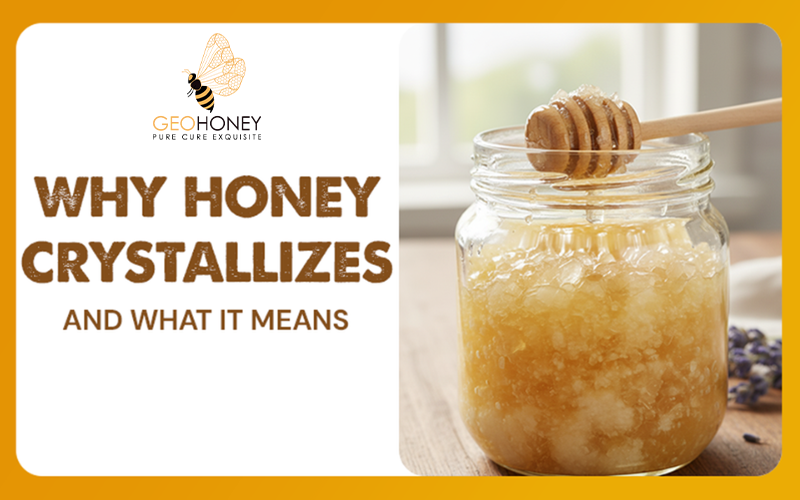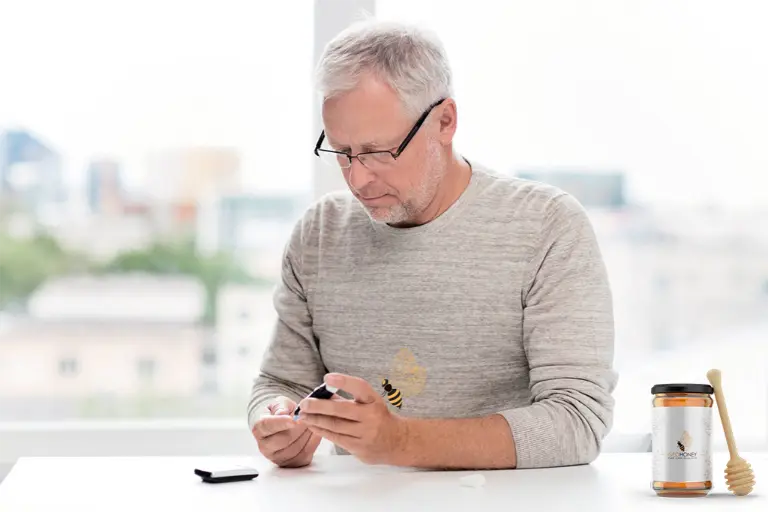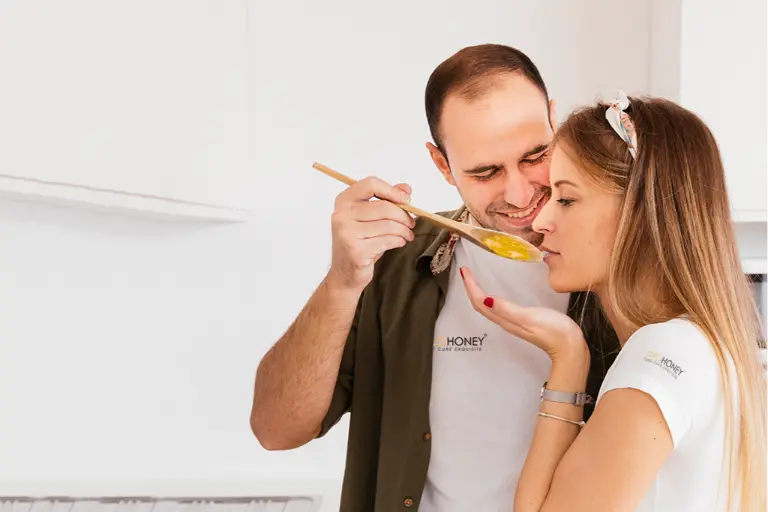- Tokyo: 14:01
- Singapore: 13:01
- Dubai: 09:01
- London: 05:01
- New York: 00:01
Why Honey Crystallizes and What It Means

The crystallization of honey is a common occurrence that leaves many people confused about its quality, integrity, and safety. Crystallized honey assumes a grainy, cloudy, and slightly solid appearance that can easily fool you into thinking that the honey has gone bad. But that is often not the case.
So, what does the crystallization of honey really mean, and why does it happen? These are the questions this blog tries to address.
“Honey crystallization is a completely natural process and, in most cases, it even indicates that the honey you own is of a better quality.”, says the founder of Geohoney and the CEO of B A Barry Group, Mr Basem Barry.
So, if your raw honey has just changed drastically in appearance and texture, then don’t worry. There is a high chance that it has crystallized. And if you wish to learn more about the crystallization process of honey and the reasons behind it, then keep on reading till the end.
Crystallization of Honey: The Science Behind It
Reasons Why Honey Crystallizes
Crystallization of Honey: What Does it Mean for Its Quality?
Tips for Preventing Honey Crystallization
Crystallization of Honey: The Science Behind It
Crystallization is a process where honey turns from liquid to a semi-solid or solid state due to the formation of crystals.
Honey is a supersaturated solution of water (17%) and sugars like glucose (31%) and fructose (38%). The crystallization of honey is triggered when the amount of sugar, mainly glucose, becomes greater than the water’s capacity to absorb.
The glucose content of sugar has lower solubility in water, and when this sugar is present in honey in greater amounts, it tends to crystallize faster.
Over time, the undissolved glucose separates from water inside the honey and gathers at the bottom in the form of tiny crystals. The shape and size of these crystals depend on specific honey types, which in turn depend on the type of nectar that bees forage.
The tiny particles of pollen or dust in the honey act as nucleation sites around which the glucose molecules begin to come out of the solution. After the formation of initial crystals, more glucose molecules become attached, and the crystals start to grow. As more time passes, the entire honey becomes grainy, creamy, and solid.
Reasons Why Honey Crystallizes
If you buy unprocessed honey and notice a change in its appearance after some time, it is usually a sign of crystallization. But why exactly does it happen? Well, there are a number of reasons your honey might be prone to crystallization, and this is what this section is all about.
Here is why your honey might crystallize.
It Contains More Sugar Than Water
Honey that contains more glucose than fructose and water tends to crystallize faster. There are some honey types, like Acacia Honey, that contain less glucose, while there are others, like Clover honey, that have more glucose.
The higher the glucose in your honey, the more it will be prone to crystallization. So, make sure to go for honey varieties that contain less glucose to slow down crystallization.
It is Stored at a Non-Recommended Temperature
The recommended storage temperatures for honey are between 21–25°C or room temperature. Storing honey at very low temperatures of about 10–15°C is another major reason for its crystallization.
Your Honey Contains Crystallization Triggering Particles
If your honey contains tiny air bubbles, wax particles, or pollen grains, it is more likely to crystallize. These particles act as seeds for initiating crystallization. Most raw, organic honey products contain these particles, and that is the reason why they are more likely to crystallize.
The Storage Conditions are Not Right
Make sure to store your honey in tightly sealed jars and place it in a dry place at room temperature. If the honey jar is not tightly sealed, moisture or dust can enter inside which triggers crystallization.
Crystallization of Honey: What Does it Mean for Its Quality?
Crystallization is a natural process that doesn’t affect the quality or usefulness of organic honey one bit. It is instead an indicator of its purity and minimal processing.
Crystallized honey is perfectly safe for consumption. In fact, some people prefer this honey due to its buttery texture that goes well with toast and pastries.
Here is what crystallization tells you about the quality of honey.
Honey is Unprocessed
If your honey has crystallized, it shows that it is minimally processed. This honey contains pollen and beeswax, which are not a part of heavily processed or adulterated honey products.
It has Natural Sugars
Crystallization shows that your honey contains natural sugars and that it has not been diluted or overheated.
It is not Spoiled
Crystallization shows that your raw honey is not spoiled or expired. It is proof that it still contains its original nutrients and antioxidants.
It is Edible
Crystallized honey is always edible. This process doesn’t make it less safe for raw consumption or culinary uses.
It contains More Nutrients
If your monofloral or polyfloral honey crystallizes quickly, it is a sign that it contains more nutrients. This natural and pure honey is unprocessed, which allows it to retain most of its healthy components, which is not the case with processed honey.
Tips for Preventing Honey Crystallization
Here are some things you can do to ensure your honey crystallizes much slowly.
Make sure to store it at room temperature between 21–27°C.
Utilize food-grade or glass containers to store the honey.
Use airtight lids to make sure the honey doesn’t come in contact with air or moisture.
Use clean and dry utensils to get the honey out of the jar.
Make sure to buy low-glucose honey.
Conclusion
Honey crystallization doesn’t mean that it has gone bad or lost some of its nutritional value. On the contrary, it tells you that the honey is authentic, pure, and minimally processed.
Honey crystallization may be triggered by many factors, including the honey type, its moisture content, storage conditions, and the presence of solid contaminants. However, the crystallization is easily reversible by lightly heating the honey in warm water or a microwave, which is what most people are not aware of.
So, the next time your honey becomes grainy or solid, do not immediately throw it away. Instead, appreciate its quality and reuse it for as long as you want after de-crystallizing it to get the best value for your money.
Check out our website GEOHONEY today to explore our wide range of pure, raw, and unprocessed honey products that give you a long shelf-life, unmatched flavor, and countless health benefits all in one.



